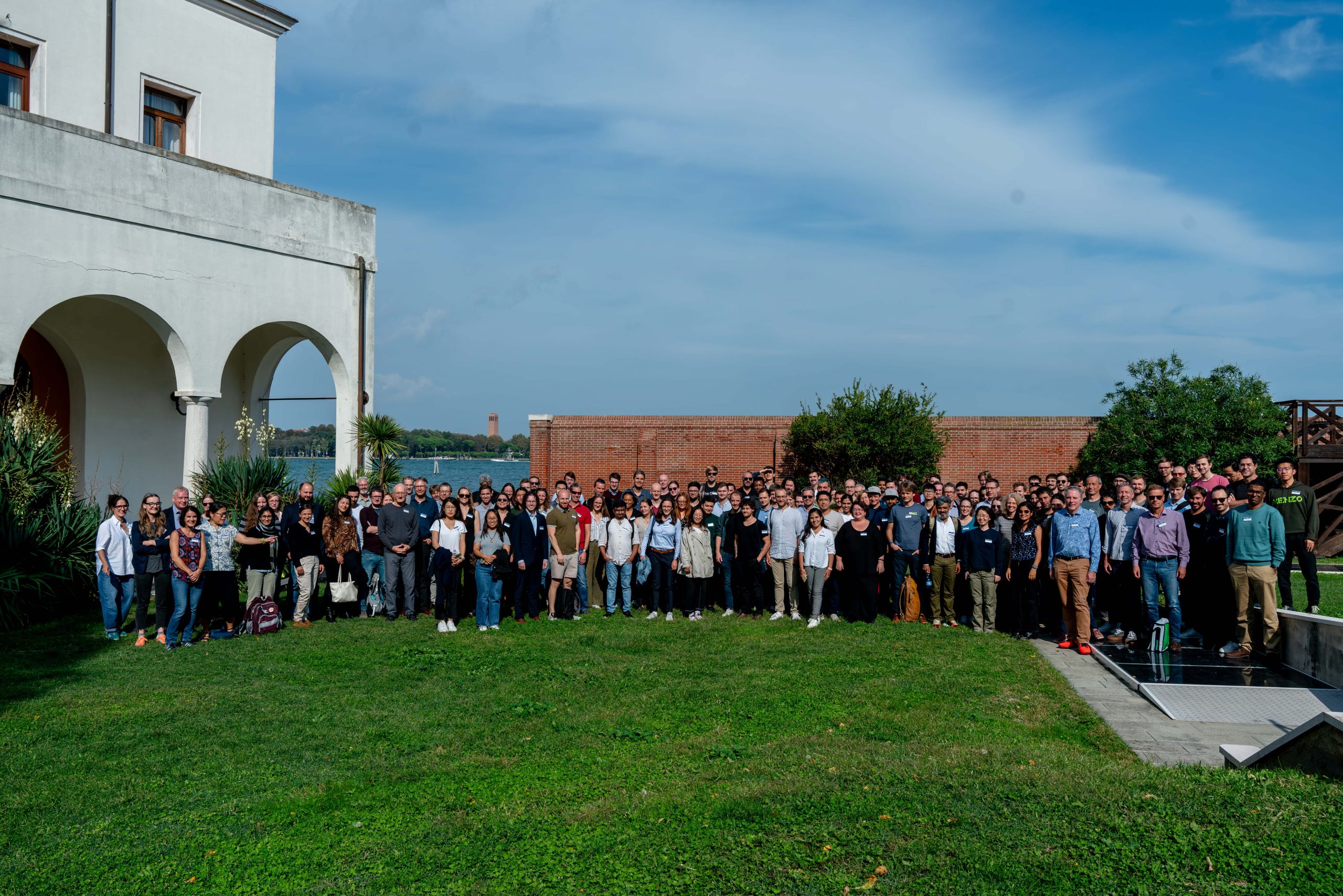 Exchanging knowledge, discussing research, and broadening horizons—the joint event of the e-conversion Excellence Cluster and the Center for NanoScience (CeNS), held from 23 to 26 September 2024, provided the perfect platform for this. It also brought together young researchers with experienced scientists from physics and chemistry, who offered insights into their current projects. “We were able to attract an impressive lineup of top experts from around the world, covering a wide range of topics highly relevant to our researchers,” explains Prof. Frédéric Laquai (LMU Munich), who served on the program committee.
Exchanging knowledge, discussing research, and broadening horizons—the joint event of the e-conversion Excellence Cluster and the Center for NanoScience (CeNS), held from 23 to 26 September 2024, provided the perfect platform for this. It also brought together young researchers with experienced scientists from physics and chemistry, who offered insights into their current projects. “We were able to attract an impressive lineup of top experts from around the world, covering a wide range of topics highly relevant to our researchers,” explains Prof. Frédéric Laquai (LMU Munich), who served on the program committee.
Achieving more together
The conference location – the island of San Servolo in Venice’s lagoon – could hardly have been more attractive. Around 140 participants arrived at the historic buildings of the former monastery, now home to the Venice International University (VIU), by Vaporetto. “The impressive conference venue and the perfectly organized workshop left a lasting impression on me,” adds Laquai. For some, the venue felt like a familiar friend, as the first e-conversion conference had already taken place there in the Fall of 2022. “It felt a bit like coming home, not just for that reason,” says Prof. Bettina Lotsch (MPG). “The e-conversion community emerged from the Munich nanoscience community, and it was wonderful to see the researchers reconnect and exchange ideas!” The Center for NanoScience (CeNS) was founded in 1998 at Ludwig Maximilian University (LMU) in Munich as one of the world’s first nanoscience networks. Some e-conversion members are also part of CeNS, which resulted in an incredibly diverse program.
 A conference with many facets
A conference with many facets
The four-day conference featured presentations as varied as the e-conversion and CeNS research fields. The conference covered the latest advancements in materials science and physical chemistry, including innovative methods for carbon dioxide capture and conversion through sunlight, simulations of electrochemical systems, and charge transport in polymer materials. The conference also highlighted groundbreaking developments in catalysis research, such as programmable catalysts. A particular focus was on new materials like perovskite crystals, which promise significant progress in solar cell technologies. “The quality of the presentations was truly impressive,” says Prof. Ian Sharp (TUM), who was also responsible for the conference program. “They provided not only foundational introductions to their respective fields but also inspirational scientific advances. The complementary breadth stimulated many fruitful discussions and highlighted potential synergies that emerge from interdisciplinary research, which is a core theme of e-conversion’s approach to research.”
 Valuable impulses and points of connection
Valuable impulses and points of connection
The presentations by international speakers also covered the latest advances in nanophotonics and quantum research, including concepts for light-based energy storage and AI-supported quantum (bio)molecule simulations. There were also talks on innovative methods for designing protein materials and the use of DNA origami. In addition to the expert presentations, there were Poster Flash Talks by young researchers. Two poster sessions also allowed young scientists to discuss their projects with the attending experts. “The active participation of doctoral candidates through flash talks, poster presentations, and discussions was especially important for generating the lively and intellectually stimulating atmosphere of the conference,” explains Sharp. Overall, the conference offered many opportunities for scientific exchange, networking, and personal conversations. “For me, the conference was an enjoyable experience. I also received very positive feedback from the students,” says Prof. Christopher Stein (TU Munich), a program committee member. “The level of the presentations was simply incredible, so one can truly say that the location attracted a fantastic, diverse set of speakers. I was very pleased to see so many discussions between the participants and the speakers. I hope we can offer this event again soon,” Stein summarizes his impressions.
Speakers:
Harry Atwater, CALTECH
Rafaella Buonsanti, EPFL
Gábor Csányi, University of Cambridge
Paul Dauenhauer, University of Minnesota
Sascha Feldmann, Harvard University
Anum Glasgow, Columbia University
Amelie Heuer-Jungemann, MPI of Biochemistry
Martin Kaltenbrunner, Johannes Kepler Universität Linz
Norbert Koch, Humboldt Universität Berlin
Anna Köhler, Universität Bayreuth
Nuria Lopez, ICIQ Catalonia
Maria Lukatskaya, ETH Zürich
Kin Fai Mak, Cornell University
Vinod Menon, The City University New York
Dieter Neher, Universität Potsdam
David Norris, ETH Zürich
Friedhelm Serwane, LMU München
Jie Shan, Cornell University
Safa Shoaee, Universität Potsdam
Henning Sirringhaus, University of Cambridge
Andreas Stierle, DESY
Verena Streibel, TU München
Akif Tezcan, UC San Diego
Andreas Tittl, LMU München
Alexandre Tkatchenko, Université du Luxembourg
Charlotte Vogt, Technion – Israel Institute of Technology
Anastasia Vorobieva, VIB-VUB Center for Structural Biology













































































